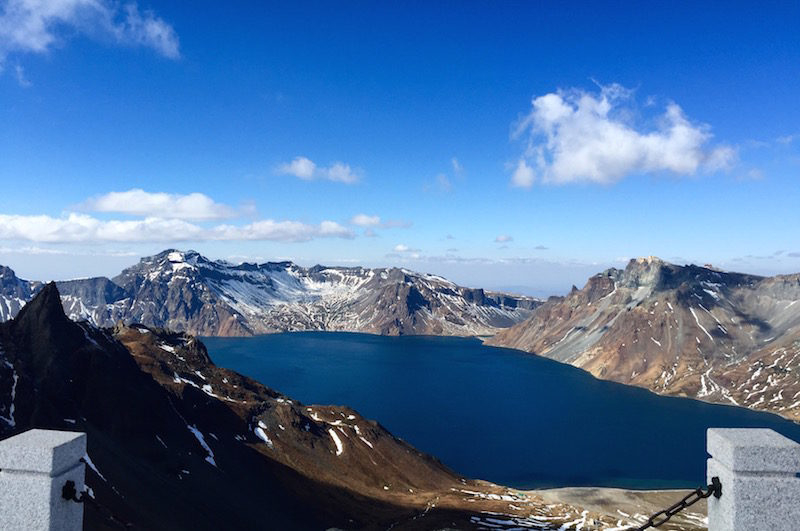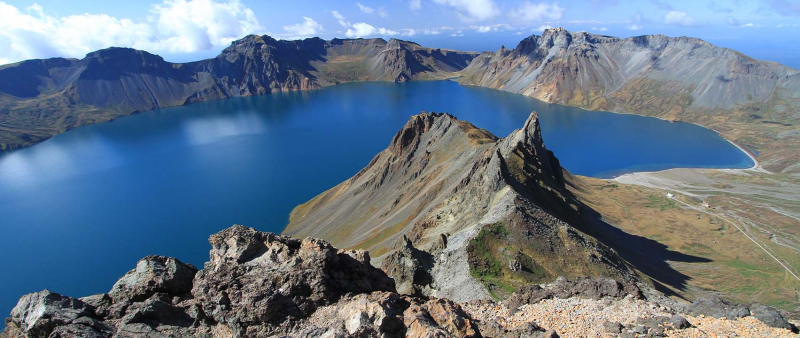Paektusan
The highest mountain on the Korean Peninsula is Mt. Paektu, also known as Paektusan, Paekdusan, Paektu San, or Changbaishan. It is also the most famous and important North Korean peak, and it has some of the most stunning landscapes in the country. Mt. Paektu, which borders China, attracts a large number of Chinese tourists each year. Changbaishan is the Chinese name for the mountain. The enormous lake crater in the middle of Paektusan's top, also known as Heaven Lake, is its most famous feature.
Mt. Paektu can only be climbed during the summer months due to the freezing temperatures at the peak. During the summer, the temperature can reach up to 18 degrees Celsius at its highest point. It can be as cold as -48 degrees in the winter. For the North Korean people, Mt. Paektu is regarded as the birthplace of Kim Jong Il, as well as the birthplace of the Korean people.
Both Koreans and Manchus think the mountains are their ancient home and continue to worship there. It is a popular tourist attraction for foreign visitors who come to see the mountain's monuments, springs, and ancient secret camps. There are five documented plant species in Heaven Lake, with additional found around its shores. Tree species such as birch and pine can be found in the forest on the Chinese side of the mountain. The woodlands around the mountains are home to Siberian tigers, bears, wolves, and Amur leopards.
It is home to black grouse, woodpeckers, and owls, among other wildlife. The Chinese and Koreans continue to argue over sovereignty of the mountain, which the Koreans consider entire Korean land and object to the Chinese's use and development. Recent Chinese initiatives in economic growth, infrastructure, and cultural festivals have exacerbated tensions between the two populations.
Height: 9,019 feet
Name Meaning: Mountain of 7 Treasures
Location: Disputed between: Ryanggang, DPRK/South Hamgyeong, ROK & Jilin, PRC/Andong, ROC










